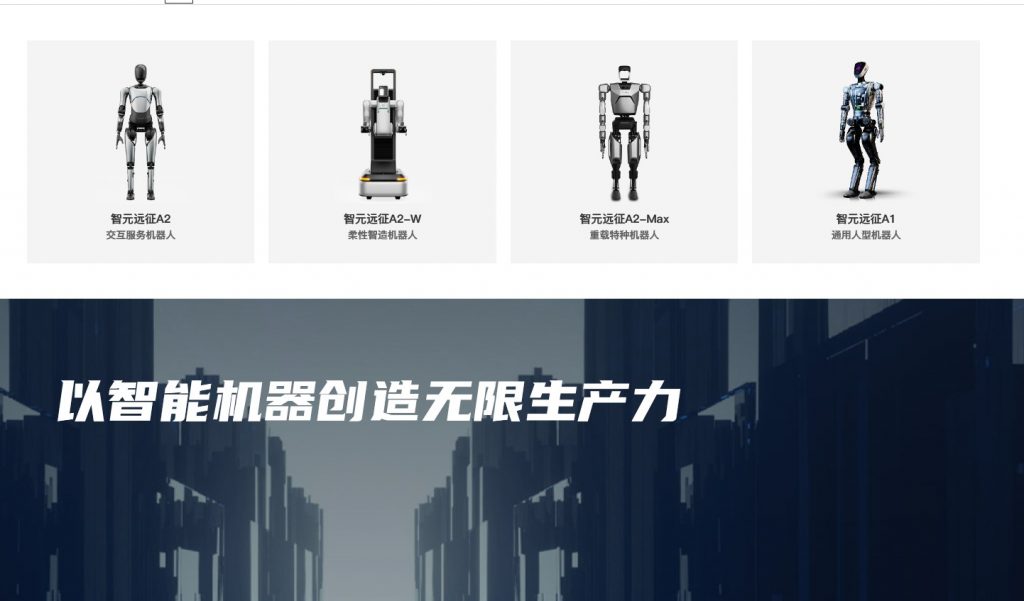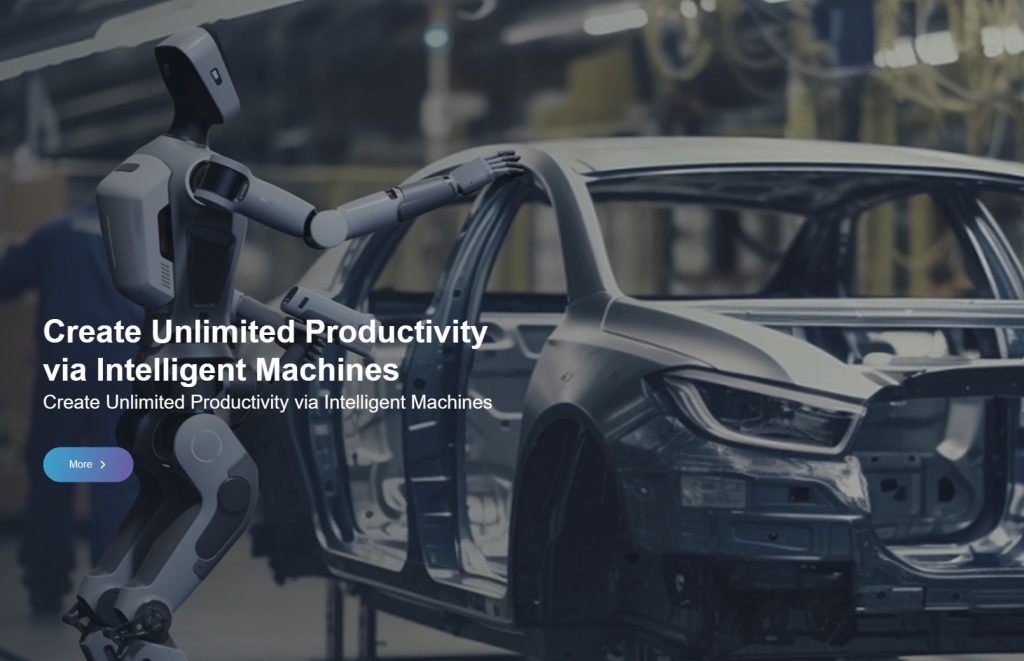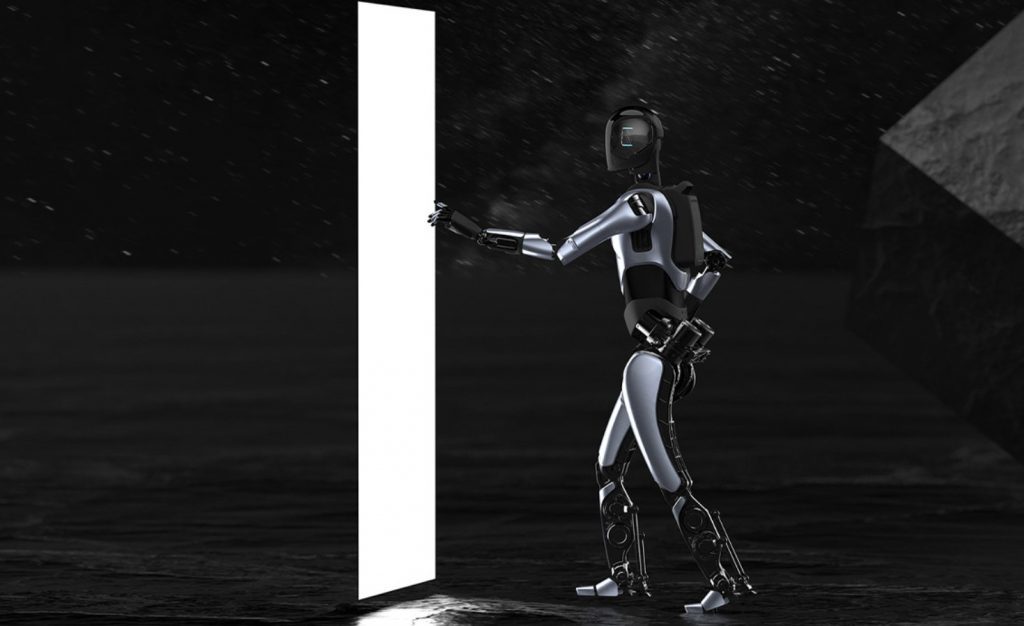On the eve of the press conference on August 18, Jiang Qingsong, a partner at AgiBot(Zhiyuan Robotics), described their vision to China Headhunter SunTzu Recruit. The initial application scenario for Tesla’s humanoid robot Optimus is in factories, which is also a key focus for AgiBot. AgiBot’s commercialization scenarios mainly include delivery service settings such as showrooms and 4S stores, as well as industrial scenarios in 3C and semiconductor manufacturing factories, with an estimated shipment volume of around 300 units this year (200 bipedal units and 100 wheeled units).

In addition, like Tesla, AgiBot has also chosen a data-driven approach.
However, there are also voices in the industry that believe it is unnecessary to hold Tesla’s products as the standard. After all, Tesla’s commercial plan for the Optimus Prime has already been delayed until 2026.
Tesla’s superior resources can support the slow commercialization process of humanoid robots, while AgiBot needs to directly enter the commercial stage and achieve some commercialization in a short time to support specific research and development. Therefore, AgiBot will have many intermediate products that meet commercial scenarios, gradually moving towards a higher goal—entering household scenarios.
This route of commercialization by picking “low-hanging fruit” is a common choice among many embodied intelligence companies in the country. However, the currently valued at CNY 7 billion AgiBot has already become one of the companies in the embodied intelligence field that has attracted the most hot money.

AgiBot is a star company in the field of embodied intelligence and is one of the “New Four Little Dragons” of embodied intelligence that has emerged during the current wave of large models. Co-founder “ZhiHui Jun” Peng Zhihui is a post-90s former “genius youth” from Huawei, and he has 2.58 million followers on Bilibili. In February 2023, ZhiHui Jun partnered with Professor Yan Weixin from Shanghai Jiao Tong University to officially establish AgiBot in Shanghai, and the company currently has nearly 350 employees.
After launching the first-generation robot AgiBot Expedition A1, AgiBot secured multiple rounds of financing including angel round, Series A, A1 round, A1+ round, A2 round, A3 round, and A4 round, with a pre-investment valuation reaching CNY 7 billion. This includes prominent institutions such as Hillhouse, Matrix Partners, DCM, Gaorong Capital, BlueRun Ventures, and Sequoia China, as well as industrial capital from BYD, SAIC Capital, and Baidu Ventures. They plan to initiate a new round of Series B financing early next year.
On August 18, Peng Zhihui, co-founder of AgiBot, hosted and announced the launch of five new commercial humanoid robots from the “Expedition” and “Lingxi” series—Expedition A2, Expedition A2-W, Expedition A2-Max, Lingxi X1, and Lingxi X1-W. He also showcased the company’s independent research and development achievements in the four key areas of robot power, perception, communication, and control, as well as the technology roadmap for embodied intelligence from G1 to G5 and the AIDEA embodied intelligence data system.
At this press conference, AgiBot announced its open-source plan, which includes: the high-performance communication framework AimRT for intelligent robots will be open-sourced by the end of September, the Lingxi X1 incubated by X-Lab will be fully open-sourced in September, and it was also announced that a million real machine data and tens of millions of simulation datasets based on AIDEA will be open-sourced in the fourth quarter of this year.
All in humanoid robot
Jiang Qingsong told China Headhunter SunTzu Recruit that the company’s focus is on general-purpose humanoid robots. Among the five new robot models released, two wheeled humanoid robots are particularly needed in factories. They believe that while bipedalism is the ultimate form of robots, it comes with more limitations—such as reliability and power consumption. However, what factories currently need is a form that can complete processes—the wheeled upper body is humanoid, capable of executing coordinated movements with both arms, and with the addition of some brain technology, it can basically solve some generalized scenario problems in factories.

Foot-based robots are more commonly used in marketing customer service, interactive service scenarios, and other situations.
In addition to humanoid robots, in March of this year, AgiBot also launched commercial cleaning robots. Their consideration at that time was to build sales channels through commercialized products. Additionally, the chassis SLAM technology of these two products can achieve interoperability, mainly targeting factory application scenarios, where there is also customer overlap.
Currently, the AgiBot factory in Shanghai Lingang has entered the final preparation stage for mass production. Production is expected to start in October, with mass production reaching one million units in November. Jiang Qingsong revealed to China Headhunter SunTzu Recruit that the domestic production rate of hardware is very high, with almost all hardware sourced from domestic suppliers.
In terms of cost, a general humanoid robot with a height of around 1.7 meters has a high manufacturing difficulty, with production costs ranging from 250,000 to 300,000, and market prices ranging from 600,000 to 700,000.
The small robot, which is about 1.3 meters tall, has a low center of gravity, is simple to manufacture, and is relatively low-cost. However, Jiang Qingsong told China Headhunter SunTzu Recruit, “We will not engage in a price war, but will open source it and provide components, allowing tech enthusiasts and geeks to quickly master the technology of humanoid robots.”
Therefore, this time AgiBot has released the full-stack open-source robot—Lingxi X1. Their ultimate ideal is to achieve “humanoid robots made by humans” through open source.
Open source, breaking down data barriers
The pain points of embodied intelligence are the small amount of data and high costs. According to statistics, there are 15T of text data, 6B of image data, and 2.6B of video data, but embodied intelligence data is only 2.4M.
Based on this, the solution proposed by AgiBot is a full-process embodied data solution—AIDEA. A million real machine data and tens of millions of simulation datasets based on AIDEA will be open-sourced in the fourth quarter of this year.
Jiang Qingsong revealed to China Headhunter SunTzu Recruit that AgiBot has just completed a training facility with about 30 units, and it is expected to establish a collection facility with around 100 units by the end of September. It will then enter a stage of mass data production. The cost of real machine data is relatively high, but the efficiency is very high; about 6,000 pieces of real machine data can train an action to achieve a relatively generalized effect. Although simulation data is cheaper, its effectiveness is only 60% to 70% of that of real machine data.
In light of the current landscape of the embodied intelligence market, Jiang Qingsong believes that the industry is still in a stage where choosing a track is more important than competition. There are not many players like AgiBot betting on the industrial scene track. This is because the market space for industry is the largest, but the entry difficulty is also the highest.
AgiBot summarizes the current industrial application scenarios as “PPT” (short for pick, place, and transfer) — picking, placing, and transferring. Industrial scenarios require sufficient generalization capability, and this year AgiBot has proven the feasibility of this direction through some breakthroughs, such as the loading and unloading of components and battery connection scenarios. These scenarios also enable AgiBot to meet the manufacturing needs of the 3C semiconductor industry.
Jiang Qingsong believes that the introduction of robots in factories does not replace blue-collar workers, but rather enhances production efficiency. They serve more as a supplement to production, and new positions may also emerge, such as data collectors, trainers, and researchers.
Although robotic arms are still the mainstream choice in traditional factory settings, Zhi Yuan Robotics believes there are many shortcomings. The key to humanoid robot technology lies in the development of brain technology, achieving full-body coordination through multimodal perception, and integrating the brain into the robotic arm to truly realize certain generalized products. This is also where the opportunity for humanoid robots like Zhi Yuan lies.

Comments are closed